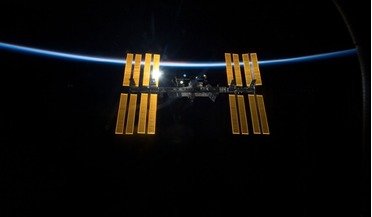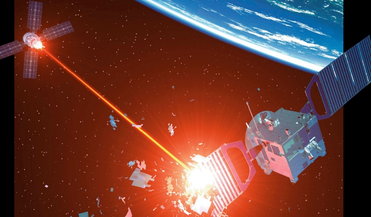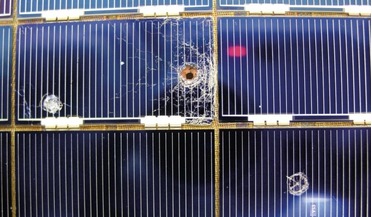ROOM: The Space Journal is one of the top magazines on space exploration, technology and industry. At ROOM, we share a common objective – promotion of peaceful space exploration for the benefit of humankind, all while bringing you comprehensive articles on a plethora of current topics. Our authors include analysts and industry leaders from all over the world, which lets us bring you the newest and accurate information about space shuttle quest for stuff.
 April 2020
Space Florida - gateway to an interstellar future
April 2020
Space Florida - gateway to an interstellar future
... federal programmes. As America and the world watched a Space Shuttle land for the final time in 2011, the outlook for Florida’s space industry was gloomy Space Florida’s solution was a widely-supported strategy to diversify ... NASA that were used to turnaround and process the Space Shuttle after landing for subsequent re-flight to space. Space Florida secured a long-term property agreement for the first of these, OPF 1, and invested to...
 October 2018
Using space-based data for humanitarian causes
October 2018
Using space-based data for humanitarian causes
...how we should use these images to ameliorate such tragedies. Though it certainly anticipates the use of space technology for humanitarian purposes, as yet it has failed to categorise law in such a way that gives ...remote sensing satellites are protected in one form or another by intellectual property law UN SPIDER (Space-based information for disaster management and emergency response) aims to assist people throughout all phases of a disaster with...
 March 2017
Space is open for business
March 2017
Space is open for business
...Food Programme, believes that it would be unrealistic to ask mankind to stop dreaming about space exploration for two decades until we solve our problems on Earth. “Incredible technological advances in the... ESA’s Strategic Planning and Outreach Office for Space Exploration, responsible for supporting ESA-wide strategic plans for space exploration and enlarging the stakeholder community engaged in the space exploration endeavour. He is involved in ...
 March 2016
Space debris conundrum for international law makers
March 2016
Space debris conundrum for international law makers
...can - or must - decide, and on what grounds, when exactly a space object ceases to be functional or can be targeted for removal. For example, is a satellite that has become damaged or uncontrollable but still retains some..., legal scholars, international organisations and non-governmental organisations have called for a new, binding treaty on space debris, or for clarifying binding protocols to the existing treaties to be promulgated after careful...
 February 2019
The Space Elevator – an alternative path to space?
February 2019
The Space Elevator – an alternative path to space?
...Lades considers the concept, the existing competition and the outlook for Space Elevator research. The first elevator may be as expensive as the Space Shuttle but its successful construction would represent a paradigm shift and ...has been proven in some spectacular launch failures. The rocket equation for chemical rockets results in only a small payload fraction. The space shuttle carried only one train-wagon-equivalent payload to LEO, around 27.5 ...
 April 2020
Is space poised to take another giant leap?
April 2020
Is space poised to take another giant leap?
... in a single 10-year period… but that might be about to change. In 2010, with the costly Space Shuttle about to be retired, the dream of future human explorers returning to the Moon seemed lost. Getting astronauts ... hydrogen available in the exposed lunar crust could be enough to power the equivalent of a daily Space Shuttle launch for 22,000 years, supporting thousands of people living off-Earth. Eliminating the expense required to lift anything...
 March 2016
Future space is challenge for international law
March 2016
Future space is challenge for international law
... space utilisation - supporting sustainable development on Earth Space debris - space operations and tools to support collaborative space situational awareness Space weather - regulatory regimes and guidance for actors in the space ...the general international law. It is alarming if the freedom of exploration and use of outer space for peaceful purposes for the benefit and in the interests of all countries, without discrimination of any kind, on...
 June 2022
Military space – how worried should we be?
June 2022
Military space – how worried should we be?
..., they advertised their peaceful purpose in the exploration of the stratosphere. The propelling force for the first satellite was the international scientific project, the International Geophysical Year, peaceful purposes ... world combined. Films like The Right Stuff (Warner Brothers, 1983) unmistakeably reflected the US government and media portrayal of early space as ‘peaceful purposes’. The Space Shuttle had its own dedicated west coast military...
 February 2021
Space archaeology - preserving our orbital heritage
February 2021
Space archaeology - preserving our orbital heritage
...of all that clutter to free up essential low and medium altitude Earth orbits (LEO and MEO). No. There’s stuff we could harvest and use up there. Maybe… perhaps we should take a look at it first and then... a small paint flake travelling in excess of 17,500 miles per hour is significant, as shown by craters observed in Space Shuttle windows. Whilst larger assets such as the ISS have Whipple shielding to provide a measure of protection from debris...